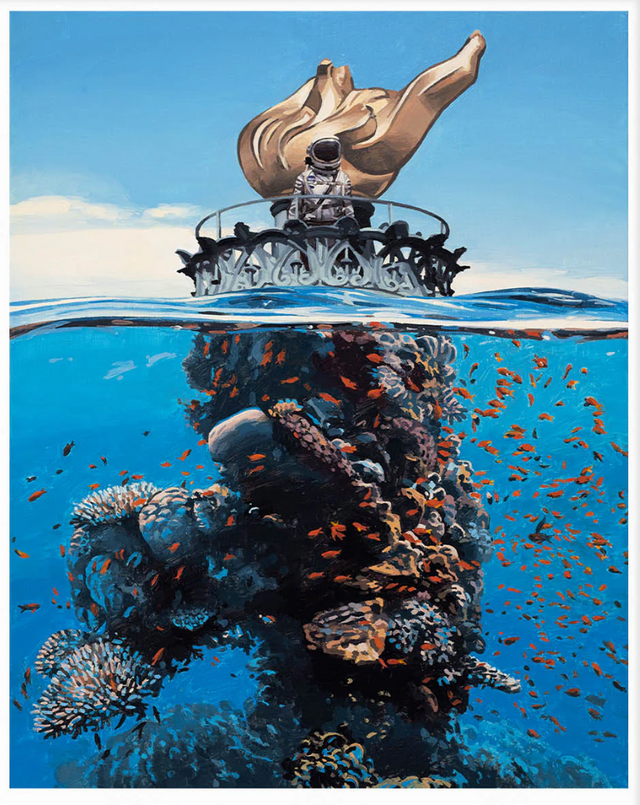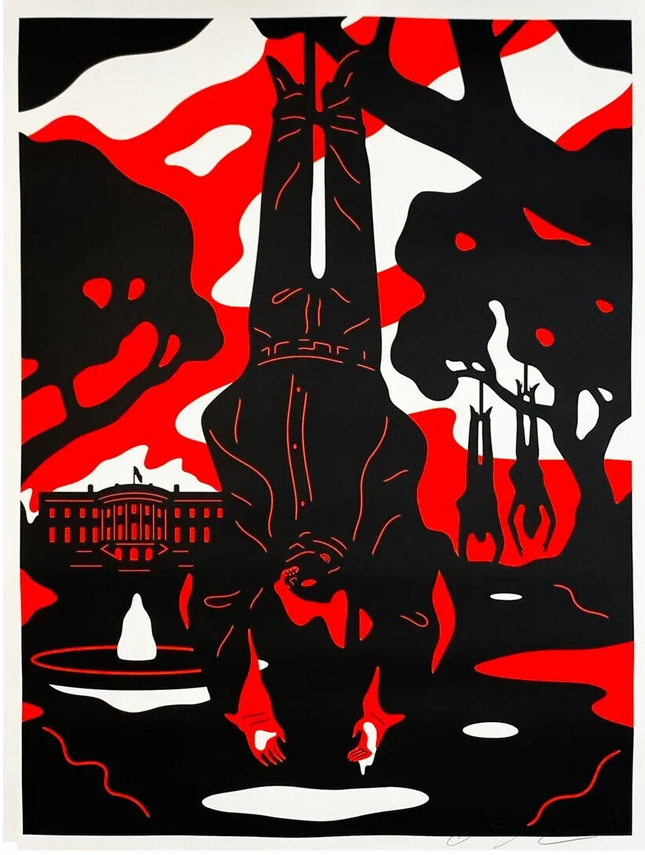
Landmark
-

Cleon Peterson Absolute Power Silkscreen Print by Cleon Peterson
Absolute Power Silkscreen Print by Cleon Peterson Hand-Pulled on Deckled 290gsm Coventry Rag Fine Art Paper Limited Edition Artwork. 2018 Signed & Numbered Limited Edition of 150 Artwork Size 26x34 Silkscreen Print Cleon Peterson's "Absolute Power" silkscreen print is a striking piece within the Street Pop Art and Graffiti Artwork domain. Hand-pulled on deckled 290gsm Coventry Rag Fine Art Paper, this artwork encapsulates the intensity and confrontation often associated with urban art narratives. Created in 2018, this piece is part of a limited edition series, with only 150 signed and numbered prints, each measuring 26x34 inches. Peterson's stark contrast between red and black imbues the piece with an arresting and disturbing visceral energy. This artwork is a bold statement on the dynamics of power and submission within societal structures. The central figure's inverted pose and the surrounding motifs of struggle and dominance conjure a sense of upheaval. The print's aggressive lines and flattened perspective are reminiscent of Greek vases and Eastern iconography, yet the work is unequivocally modern in its thematic exploration of contemporary power struggles. Peterson's work often reflects on chaos and order, violence, and the cyclical nature of power, which he portrays through scenes of conflict that are as aesthetically stark as they are thematically challenging. "Absolute Power" is not merely an illustration; it is a conversation piece that demands contemplation on the forces that govern human interactions and the often brutal nature of authority. It is a testament to the power of Street Pop Art and Graffiti Artwork to reflect and critique the underlying tensions of our time. Through its bold depiction and limited availability, Peterson's print becomes a coveted item for collectors and a significant piece for observers, ensuring its message and impact resonate well beyond the confines of traditional gallery spaces.
$1,236.00




 العربية
العربية 简体中文
简体中文 Dansk
Dansk Nederlands
Nederlands Filipino
Filipino Suomi
Suomi Français
Français Deutsch
Deutsch Ελληνικά
Ελληνικά עִבְרִית
עִבְרִית हिन्दी
हिन्दी Íslenska
Íslenska Bahasa Indonesia
Bahasa Indonesia Italiano
Italiano 日本語
日本語 한국어
한국어 Latin
Latin Bahasa Melayu
Bahasa Melayu Norsk bokmål
Norsk bokmål فارسی
فارسی Português
Português Español
Español Svenska
Svenska ไทย
ไทย Türkçe
Türkçe Tiếng Việt
Tiếng Việt